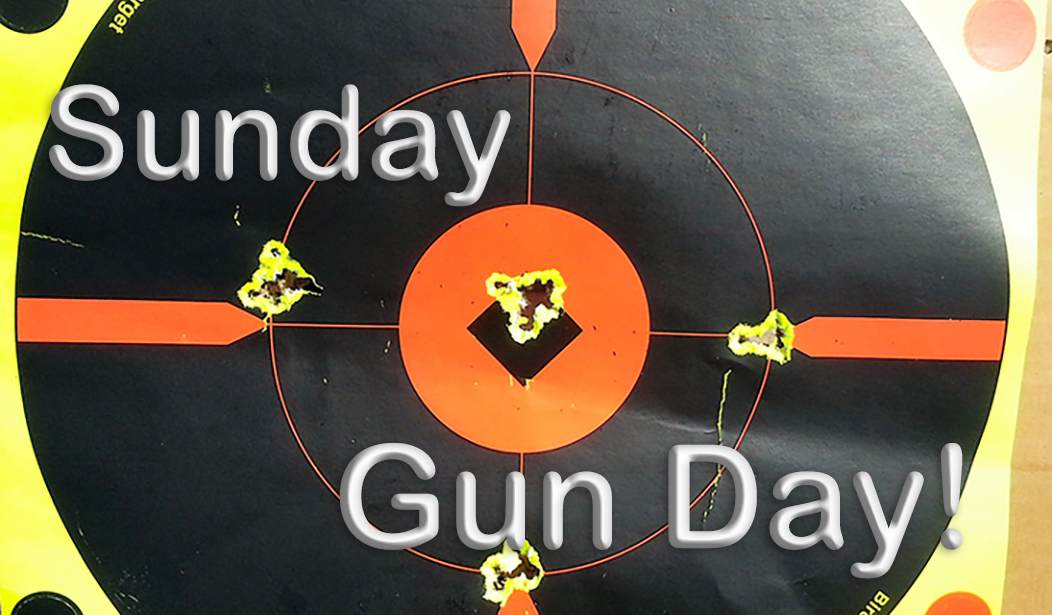When my company was being mobilized for Operation Desert Storm, I had working for me a supply sergeant who, like me, was a gun nut, and with whom I spent hours discussing gun stuff. When we got the word of our deployment, we looked at the rack of M16A1 rifles in the supply room’s vault, considered the wide-open desert terrain of our area of operations, and asked, “Can we bring personal weapons?” My supply sergeant, thinking that, as a medical unit, if we got in a fight, it would be inside the wire. He had planned to bring along a 9-shot Mossberg riot shotgun with a bayonet lug. Personally, I was considering the Springfield Armory M1A, a semi-automatic rifle firing a .30-caliber cartridge, which would provide me with significantly more power and range than the M16A1 I was issued.
Of course, we got the answer we expected – “No.” Fortunately, the issue never arose. But that M1A I had looked at with some envy was a civilian variant of America’s last Main Battle Rifle, the M14.
The Origins
Most American soldiers these days are issued a true “assault rifle,” that being a select-fire carbine-length piece using a medium-power cartridge. Our current issue is the M-16/M-4 platform, and after a few decades of development, it’s still getting most jobs done reasonably well.
But there’s still a place for a Main Battle Rifle (MBR), firing a full-power, generally .30-caliber cartridge, a semi-auto or select-fire weapon. We still have one, but most service members never see one.
America’s last general-issue Main Battle Rifle was the M14, which borrowed heavily from the immortal M1 Garand while adding a 20-round magazine and using the 7.62mm NATO round (more or less the civilian .308 Winchester) instead of the grand old .30-06. It is still in use with the U.S. military, and is available in semi-automatic civilian trim as the M1A rifle. There are many other MBRs out there, but the M14 was ours, and it has an interesting story all on its own.
The Design
The Garand was a great battle rifle. It was so great, it inspired no less a warrior than General George Patton to call it the “greatest battle implement ever devised.” But it did have limits, not the least of which was its 8-round en bloc clip, which ejected with a loud ping, that broadcast to the enemy “American troop with empty rifle here.” And reloading, if one was in a hurry, could cause what was known as “M1 thumb.”
Read More: Sunday Gun Day XLV - The Greatest Battle Implement Ever Devised, the M1 Garand
In May 1944, the Army began looking for a replacement. The design of the new rifle was the responsibility of the United States Springfield Armory, which soon came up with what they called the T20 rifle. This first iteration still used the great Caliber .30, Model of 1906 cartridge, but replaced the 8-round clip with a 20-round box magazine, specifically, the same magazine used for the Browning Automatic Rifle, or BAR.
The T20 was still in evaluation after the war, when NATO was formed. NATO, to avoid logistical headaches that troubled the World War 2 allies, intended to ensure standard ammunition for everything from rifles to tank guns; while this took some time, the rifle cartridge that was very quickly adopted that being the .30 caliber 7.62mm NATO cartridge. This cartridge inspired and very closely approximates the civilian .308 Winchester; it is a shortened version of the .30-06.
Read More: Sunday Gun Day Vol. II Ep. IX - the M1 Carbine and the .30 Carbine Cartridge
The T20 was adapted for the new cartridge and became the T44 series, then under development at Springfield Armory. It used the new cartridge, but otherwise retained much of the tested, reliable works of the M1. After testing was complete, the T44 was adopted as the standard United States military long arm, and designated the “Rifle, 7.62mm, M14” in 1957.
The Guns
The new rifle wasn’t without its detractors. It was a couple of pounds heavier than the already heavy M1. It was reliable and routinely slam-dunked tests of extreme conditions of cold, heat, dust and dirt, and more. But when other manufacturers, including Harrington & Richardson and Winchester, started making M14s, some quality problems began to arise, including some that could result in catastrophic failures of the action.
Later, an improved version was issued, the M14A1.
One of the major problems with the select-fire M14 was that it was almost impossible to control when firing full-auto. It would quickly climb off target when firing full-auto, and bullets that make holes in the air are not nearly as effective in warfare as bullets that make holes in the enemy, so this was a bad thing.
Not only was the M14 heavy, but the ammo was also heavy. The rifle weighed 10.7 pounds with a loaded magazine in place. In the late ‘50s and early ’60s, the United States Air Force began experimenting with a lighter rifle and cartridge designed by Eugene Stoner, that being the AR-15 platform. This rifle was light, handy, and while the first versions had some reliability issues, the one advantage they had over the M14 was that they were controllable in full-auto fire; one can direct the M16 like a garden hose.
In 1963, Secretary of Defense Robert McNamara ordered production of the M14 to cease, and the M16 became the primary long arm of the United States military.
What Happened Next
Variants of the M14 are still in use with the American armed forces, including the M21 and M25 sniper rifles. Better still, the M-14 is seeing something of a resurgence in the rise of the Mk 14 Enhanced Battle Rifle, first issued in 2002. The United States Navy retains some M14 rifles for use in line-throwing and as designated marksman rifles.
But the really interesting story in this design is the adoption of the basic pattern into civilian use. The civilian gun manufacturer Springfield Armory – no connection to the United States Springfield Armory – still manufactures a semi-auto version of this pattern, called the M1A. The M1A comes in a replica of the issue M14, with a wood stock, as well as in various Tacticool versions with synthetic stocks and Picatinny rails on every available surface. National Match versions are also available, and these are fine for punching holes in paper (and other things) at a considerable distance.
The T44/M14/M1A is a great design: Reliable, powerful, accurate. Despite its short stint as the United States military’s primary long arm, it has served well in many roles, and still does today. It’s a great design, a great rifle, and now that I’ve described it, I may well go to one or two of my favorite online gun auction sites and see if I can still find myself that M1A.













